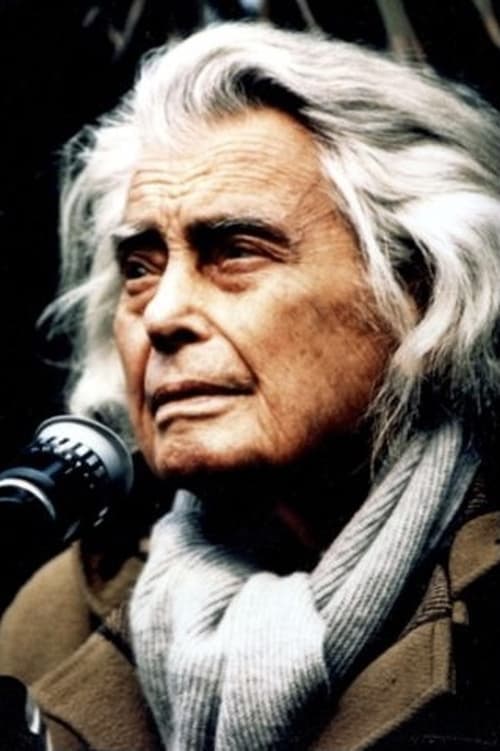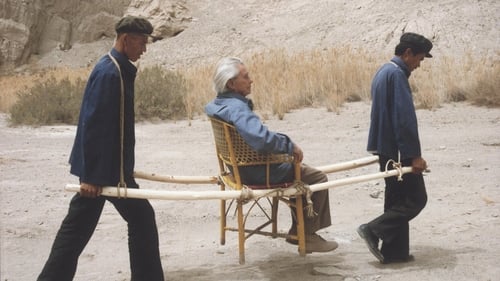
Writer
Tendo sido asmático durante toda a vida, Joris Ivens começa o filme com pensamentos sobre a respiração que sustenta a sua e todas as outras vidas e que se manifesta no mundo como o vento.

himself
Tendo sido asmático durante toda a vida, Joris Ivens começa o filme com pensamentos sobre a respiração que sustenta a sua e todas as outras vidas e que se manifesta no mundo como o vento.

Director
Tendo sido asmático durante toda a vida, Joris Ivens começa o filme com pensamentos sobre a respiração que sustenta a sua e todas as outras vidas e que se manifesta no mundo como o vento.

le docteur Digitalis
In a port city, a youth plays a computer game that determines the fate of a woman (whose interracial romance is threatened by white punks) and other residents.

Three pioneers of documentary filmmaking – Joris Ivens, Henri Storck, and the man behind the camera, Jean Rouch – recall the early days of the documentary genre and speak about their creative methods and sources of inspiration. This lively discussion between the directors is shot in cinéma vérité style and spliced with footage from their older films.

Writer
Documentary about the Kazakh minority in western China in the last years of the Cultural Revolution.

Director
Documentary about the Kazakh minority in western China in the last years of the Cultural Revolution.

Director
A short documentary about the Uyghur minority of western China.

Director
A César award winning documentary about a high school in Beijing where a student throws a ball in the direction of the teacher who had just asked them to stop playing. The class then meets to discuss this problem.

Editor
From 1972 until 1974, Joris Ivens and Marceline Loridan, along with a Chinese film crew, documented the last days of the Cultural Revolution, marking the end of an era. The vast amount of footage they shot was edited into 14 films of varying lengths. Focusing on ordinary people spread over a wide geographic area—many of whom were living and working in collectives—the filmmakers recorded a unique moment in history, and also captured some of the more enduring aspects of Chinese culture.

Director
Joris Ivens and wife Marceline Loridan took their cameras into Pharmacy No. 3 in Shanghai, which in addition to dispensing drugs manages an outreach program of medical services, an extension of the pharmacy’s in-house medical care center.

Director
From 1972 until 1974, Joris Ivens and Marceline Loridan, along with a Chinese film crew, documented the last days of the Cultural Revolution, marking the end of an era. The vast amount of footage they shot was edited into 14 films of varying lengths. Focusing on ordinary people spread over a wide geographic area—many of whom were living and working in collectives—the filmmakers recorded a unique moment in history, and also captured some of the more enduring aspects of Chinese culture.

Director
Directed by Joris Ivens and Jean-Pierre Sergent.

Director
Directed by Joris Ivens.

Writer
On the border of North and South Vietnam, civilians live underground and cultivate their land in the dead of night, farmers take up arms, and bombs fall like clockwork. Joris Ivens and Marceline Loridan’s record of daily life in one of the most volatile regions of a war-torn, divided country is both a hazardous piece of first-hand journalism and a shattering work in its own right, simmering with barely repressed anger.

Director
On the border of North and South Vietnam, civilians live underground and cultivate their land in the dead of night, farmers take up arms, and bombs fall like clockwork. Joris Ivens and Marceline Loridan’s record of daily life in one of the most volatile regions of a war-torn, divided country is both a hazardous piece of first-hand journalism and a shattering work in its own right, simmering with barely repressed anger.
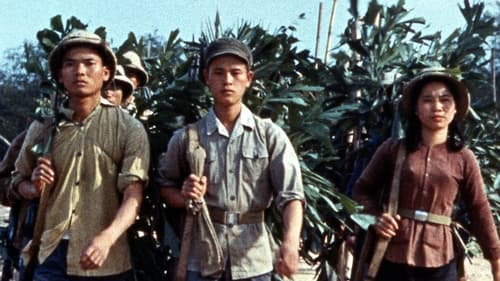
Director
In seven different parts, Godard, Ivens, Klein, Lelouch, Marker, Resnais, and Varda show their sympathy for the North-Vietnamese army during the Vietnam War.

Interviewer
Pro-Vietnamese film created by Dutch filmmaker Joris Ivens. This black and white film begins with an introduction by Bertrand Russell, who explains the history of the run-up to the American involvement in Vietnam. The film shows scenes of Vietnamese soldiers in trenches, American helicopters, agricultural workers, and children assembling anti-aircraft shells. A narrator speaks of the American invasion as being on par with the Germans during World War II and characterizes the Vietnamese as resistance fighters. Anti-American protests are shown. Ivens is shown interviewing Ho Chi Minh. Vietnamese villagers build dams for rice paddies, make traps using bamboo spikes, and take cover during air raids. Scenes include the headquarters of the National Liberation Front, a military execution, bombings, and villagers attempting to shoot down US bomber planes.

Director
Pro-Vietnamese film created by Dutch filmmaker Joris Ivens. This black and white film begins with an introduction by Bertrand Russell, who explains the history of the run-up to the American involvement in Vietnam. The film shows scenes of Vietnamese soldiers in trenches, American helicopters, agricultural workers, and children assembling anti-aircraft shells. A narrator speaks of the American invasion as being on par with the Germans during World War II and characterizes the Vietnamese as resistance fighters. Anti-American protests are shown. Ivens is shown interviewing Ho Chi Minh. Vietnamese villagers build dams for rice paddies, make traps using bamboo spikes, and take cover during air raids. Scenes include the headquarters of the National Liberation Front, a military execution, bombings, and villagers attempting to shoot down US bomber planes.

Scenario Writer
Dutch documentary filmmaker Joris Ivens follows the course of the famous wind as it originates in the Alps and finds its way to the Mediterranean Sea. Natural sounds and creative camera work provide a mood film showing the effect of the fury of the wind on the life of southern France.

Director
Dutch documentary filmmaker Joris Ivens follows the course of the famous wind as it originates in the Alps and finds its way to the Mediterranean Sea. Natural sounds and creative camera work provide a mood film showing the effect of the fury of the wind on the life of southern France.

Writer
Instructional film about the (former) biggest harbour in the world, with a hybrid format. Well known Ivens themes are revisited, like The Flying Dutchman in the fiction part of the film, who returns to the modern day Rotterdam, that has recovered very well after the devastating bombardments in the second world war.

Director
Instructional film about the (former) biggest harbour in the world, with a hybrid format. Well known Ivens themes are revisited, like The Flying Dutchman in the fiction part of the film, who returns to the modern day Rotterdam, that has recovered very well after the devastating bombardments in the second world war.
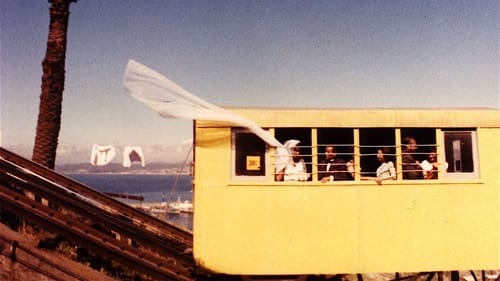
Director
Em 1962, Joris Ivens foi convidado ao Chile para dar aulas e fazer filmes. Junto com os alunos fez este curta-metragem. Comparando a prestigiosa história do porto com a atualidade, este é um retrato da cidade construída sobre 42 colinas, com sua riqueza e pobreza, sua vida cotidiana nas ruas.

Director
Documentary filmed during the shooting of “À Valparaiso” which shows the children’s reactions to the performance of a circus show. “It is the tender gaze of a poet on the smallest circus in the world and his audience of children”.

Thanks
Documentary compiled from archives and accompanied by a poet's commentary, shows the sweep of modern Italian history from 1911 to 1961, centering on the conditions leading to Fascism and the post-WWII reaction to the Fascist experience.

Director
Cuba, pueblo armado was shot by Joris Ivens in 1961 and illustrates the Cuban people's determination to defend the revolution. To make this film, Ivens and his crew followed a military brigade which consisted of volunteers.

Editor
A documentary about Italy's underground oil and metan deposits, sponsored by Italian state-owned oil company, ENI. Pictures of the state-of-the-art oil infrastructure are mixed with others of the traditional way of living of poorer Italian regions.

Director
A documentary about Italy's underground oil and metan deposits, sponsored by Italian state-owned oil company, ENI. Pictures of the state-of-the-art oil infrastructure are mixed with others of the traditional way of living of poorer Italian regions.

Director
Directed by Joris Ivens.

Writer
About the way of life in the East, in China, during the months before spring. An early spring.

Director
About the way of life in the East, in China, during the months before spring. An early spring.

Writer
A poetic ode to the River Seine, Ivens' distinguished camera eye surveys its lively banks and step-stone canals with a vérité candor, a beguiling elan.

Director
A poetic ode to the River Seine, Ivens' distinguished camera eye surveys its lively banks and step-stone canals with a vérité candor, a beguiling elan.

Producer
Die Windrose, distribuído no Brasil com o nome A Rosa-dos-Ventos (1957), Direção Geral de Alberto Cavalcanti e Joris Ivens. Aportes em criação de Simone Signoret, Yves Montand and Helene Weigel (wife of Bertold Brecht) e Yannick Bellon. Produzido pela DEFA da Alemanha Oriental. São 5 episódios. O brasileiro Ana (1954) dirigido por Alex Viany. O italiano Giovanna (1956), dirigido por Gillo Pontecorvo.

Director
Die Windrose, distribuído no Brasil com o nome A Rosa-dos-Ventos (1957), Direção Geral de Alberto Cavalcanti e Joris Ivens. Aportes em criação de Simone Signoret, Yves Montand and Helene Weigel (wife of Bertold Brecht) e Yannick Bellon. Produzido pela DEFA da Alemanha Oriental. São 5 episódios. O brasileiro Ana (1954) dirigido por Alex Viany. O italiano Giovanna (1956), dirigido por Gillo Pontecorvo.
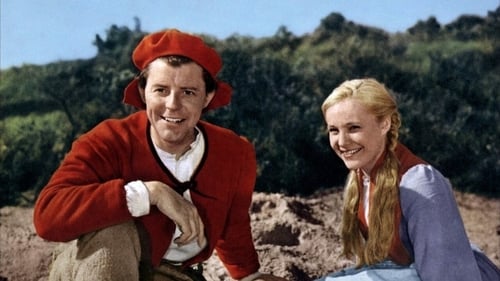
Director
Based on the book by Belgian XIX century author Charles de Coaster.

Director

Editorial Coordinator
An allegorical documentary about the workers of the world, whose common destinies and hopes for peace are symbolically united by the rivers that run through their respective lands. The film was shot on the Volga, the Mississippi, the Nile, the Yangtze, the Amazon and the Ganges and combines these images of five continents with the music of Dmitri Shostakovich and the poetry of both Bertolt Brecht and Paul Robeson.

Writer
An allegorical documentary about the workers of the world, whose common destinies and hopes for peace are symbolically united by the rivers that run through their respective lands. The film was shot on the Volga, the Mississippi, the Nile, the Yangtze, the Amazon and the Ganges and combines these images of five continents with the music of Dmitri Shostakovich and the poetry of both Bertolt Brecht and Paul Robeson.

Director
An allegorical documentary about the workers of the world, whose common destinies and hopes for peace are symbolically united by the rivers that run through their respective lands. The film was shot on the Volga, the Mississippi, the Nile, the Yangtze, the Amazon and the Ganges and combines these images of five continents with the music of Dmitri Shostakovich and the poetry of both Bertolt Brecht and Paul Robeson.

Director
This colour documentary reports about the 5th international peace journey which took place from 30 April to 13 May 1952 and in which 94 drivers from 16 nations took part. Twelve individual stages from Warsaw via Berlin to Prague had to be mastered. The total length was 2135 kilometres, and for the first time the Peace Journey was also held on GDR soil. The individual stages are reported with gripping film shots, short portraits of the cities and regions complete the itinerary. Exciting duels, crashes, winners, but also enthusiastic spectators and cheering workers at the roadsides show the sport from different perspectives. Intermediate cuts and reviews of the expansion and reconstruction of the cities of Warsaw, Berlin and Dresden are also part of this documentary film, as is a critical report on Bloody Sunday in Essen and the police's action against opponents of rearmament in West Germany.

Director
Film about the third 'Weltfestspiele der Jugend und Studenten für den Frieden' in East Berlin, 1951. West Germany is represented as a degenerate country which has been occupied by the Americans and is still inclined to fascism. We see the construction of the stadium, the departure and arrival of the delegations, the opening and closing by Enrico Berlinguer, a sports event, the parade of the delegations, a visit to Potsdam, folk dancing, and police violence against youngsters from West Berlin who want to visit East Germany because of the games. The film is interlaced with shots from the Korean War and a parade by NATO-troops in West Germany. Featuring Robert Montgomery, Konrad Adenauer, Wilhelm Pieck, Dwight Eisenhower, Robert Leer and Erich Honecker. The crew comprised no less than 24 cameramen. This project was the first great colour film Ivens co-operated in.

Writer
This film describes the Second World Congress of Peace Defenders, held in Warsaw on November 16-22, 1950. Sheffield, an industrial city in England, was the initial location of the event, however, it was transferred to the capital of Poland at the very last moment.

Director
This film describes the Second World Congress of Peace Defenders, held in Warsaw on November 16-22, 1950. Sheffield, an industrial city in England, was the initial location of the event, however, it was transferred to the capital of Poland at the very last moment.

Editor

Director

Director

Editor
Two weeks after the bombing of Hiroshima and Nagasaki, in August 1945, Indonesian Independence leaders proclaimed “Indonesia Merdeka!” ‘Freedom for Indonesia’ and an end to Dutch colonial rule over the Netherlands East Indies. Internationally renowned Dutch filmmaker Joris Ivens, in Australia as Film Commissioner for the Netherlands East Indies government in exile, resigned his position in protest against Dutch policy, which sought to re-impose its colonial rule. In collaboration with Indonesian activists, Chinese, Indian and Australian trade unionists, and local artists and filmmakers, Ivens made Indonesia Calling, a film documenting the crucial role of Australian trade union support in the establishment of the new Republic of Indonesia. Ivens’ film was an activist documentary; it actively contributed to the events it depicted. All those who worked on it became ‘adversely known’ to the security services.

Writer
Two weeks after the bombing of Hiroshima and Nagasaki, in August 1945, Indonesian Independence leaders proclaimed “Indonesia Merdeka!” ‘Freedom for Indonesia’ and an end to Dutch colonial rule over the Netherlands East Indies. Internationally renowned Dutch filmmaker Joris Ivens, in Australia as Film Commissioner for the Netherlands East Indies government in exile, resigned his position in protest against Dutch policy, which sought to re-impose its colonial rule. In collaboration with Indonesian activists, Chinese, Indian and Australian trade unionists, and local artists and filmmakers, Ivens made Indonesia Calling, a film documenting the crucial role of Australian trade union support in the establishment of the new Republic of Indonesia. Ivens’ film was an activist documentary; it actively contributed to the events it depicted. All those who worked on it became ‘adversely known’ to the security services.

Director
Two weeks after the bombing of Hiroshima and Nagasaki, in August 1945, Indonesian Independence leaders proclaimed “Indonesia Merdeka!” ‘Freedom for Indonesia’ and an end to Dutch colonial rule over the Netherlands East Indies. Internationally renowned Dutch filmmaker Joris Ivens, in Australia as Film Commissioner for the Netherlands East Indies government in exile, resigned his position in protest against Dutch policy, which sought to re-impose its colonial rule. In collaboration with Indonesian activists, Chinese, Indian and Australian trade unionists, and local artists and filmmakers, Ivens made Indonesia Calling, a film documenting the crucial role of Australian trade union support in the establishment of the new Republic of Indonesia. Ivens’ film was an activist documentary; it actively contributed to the events it depicted. All those who worked on it became ‘adversely known’ to the security services.

Director
Frank Capra-directed propaganda film produced during World War II depicting the United States' new enemy: Japan.

Director
This short documentary examines the role of convoy ships during World War II, focusing on the Corvette Port Arthur. The corvette, a highly mobile weapon of destruction, is used to combat German U-boats and escort convoys through the Atlantic Ocean. Following the corvette through an encounter with an enemy submarine, the film offers a glimpse into a day in the life of the Royal Canadian Navy.

Director
This World War II film highlights the role of Canadian corvettes on convoy duty in the North Atlantic. Battle scenes show a crew sighting a German submarine and sinking it. Other scenes show training on the high seas.

Director
Using footage taken by Soviet battlefront cameramen, this penetrating documentary about Russian life during World War II is narrated by Walter Huston and features the likes of Joseph Stalin and Marshal Timoshenko.
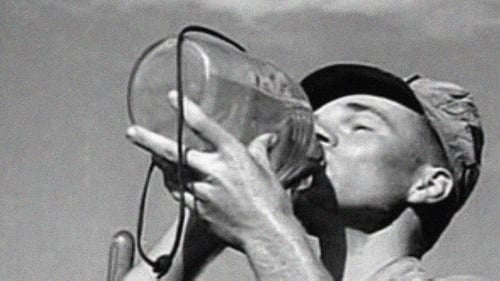
Writer
A documentary showing the struggle to bring electricity to rural areas of the United States.

Director
A documentary showing the struggle to bring electricity to rural areas of the United States.
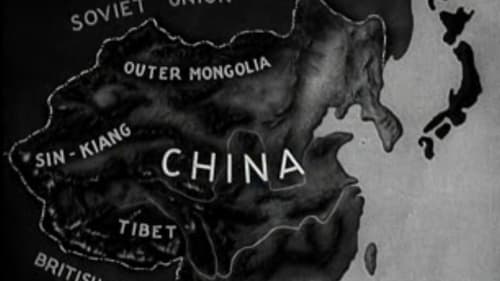
Writer
The 400 million people of China are heirs to a great civilization, as their pagodas and stone lions can attest. But they are under attack from the Japanese. Civilian refugees walk, stumble, crawl to escape the destruction of their cities... While in the China of tradition, water buffalo still work the paddies and camels cross the desert, modern China is now a republic founded by Dr. Sun Yat-sen, with modern schools, heavy industry, large engineering projects... The government of Chiang Kai-shek resists the Japanese invasion from the coast. Madame Chiang receives a cheque from the U.S.A. for war relief. War production continues in distant villages safe from the grasp of the Japanese. With modern weapons the Chinese are pursuing their struggle behind enemy lines. And still their opponent persists in his reprisal bombings of civilian targets. "Will these people win?"

Director
The 400 million people of China are heirs to a great civilization, as their pagodas and stone lions can attest. But they are under attack from the Japanese. Civilian refugees walk, stumble, crawl to escape the destruction of their cities... While in the China of tradition, water buffalo still work the paddies and camels cross the desert, modern China is now a republic founded by Dr. Sun Yat-sen, with modern schools, heavy industry, large engineering projects... The government of Chiang Kai-shek resists the Japanese invasion from the coast. Madame Chiang receives a cheque from the U.S.A. for war relief. War production continues in distant villages safe from the grasp of the Japanese. With modern weapons the Chinese are pursuing their struggle behind enemy lines. And still their opponent persists in his reprisal bombings of civilian targets. "Will these people win?"

Writer
A propaganda film made during the Spanish Civil War in support of the Republican government against the rebellion by Gen. Francisco Franco's forces who were backed by Nazi Germany and Fascist Italy. The film would have been seen by those making it as a documentary.

Director
A propaganda film made during the Spanish Civil War in support of the Republican government against the rebellion by Gen. Francisco Franco's forces who were backed by Nazi Germany and Fascist Italy. The film would have been seen by those making it as a documentary.

Screenplay

Director of Photography
Documentary about a miner's strike in Borinage.

Writer
Documentary about a miner's strike in Borinage.

Director
Documentary about a miner's strike in Borinage.

Camera Operator
The film is a documentary portraying a struggle as man tries to subdue nature. To prevent flooding and for purposes of land reclamation, the people of the Netherlands struggle and succeed in building a breaker, thereby eliminating the wild inland body of water once known as the Zuider Zee (now called Ijsselmeer).

The film is a documentary portraying a struggle as man tries to subdue nature. To prevent flooding and for purposes of land reclamation, the people of the Netherlands struggle and succeed in building a breaker, thereby eliminating the wild inland body of water once known as the Zuider Zee (now called Ijsselmeer).

Writer
The film is a documentary portraying a struggle as man tries to subdue nature. To prevent flooding and for purposes of land reclamation, the people of the Netherlands struggle and succeed in building a breaker, thereby eliminating the wild inland body of water once known as the Zuider Zee (now called Ijsselmeer).

Director
The film is a documentary portraying a struggle as man tries to subdue nature. To prevent flooding and for purposes of land reclamation, the people of the Netherlands struggle and succeed in building a breaker, thereby eliminating the wild inland body of water once known as the Zuider Zee (now called Ijsselmeer).

Editor
The building of blast furnaces Magnitogorsk and the Kubas Basin by Komsomol, the Communist Union of youth, as part of Stalin’s first five-year plan.

Director
The building of blast furnaces Magnitogorsk and the Kubas Basin by Komsomol, the Communist Union of youth, as part of Stalin’s first five-year plan.

Camera Operator

Scenario Writer

Editor

Director

Writer
An industrial film which shows the operations inside the Philips Radio plant: In a mêlée of activity, glassblowers make delicate glass bulbs. Machinery assists the bulb manufacture. A virtuoso glassblower begins a more complex tube used in radio broadcasting; it is then turned, fired, and sculpted. Conveyors carry partially completed units. Workers perform their various specific assembly-line tasks. Cases are manufactured and machined, wire harnesses are assembled, loudspeakers are produced. As radios near completion, they are run through a series of tests. Engineers and draughtsmen define future developments. In a closing stop-motion sequence, in a style reminiscent of Norman McLaren, a group of loudspeakers performs a playful dance. The film overall is a poetic depiction of an industrial process.

Director
An industrial film which shows the operations inside the Philips Radio plant: In a mêlée of activity, glassblowers make delicate glass bulbs. Machinery assists the bulb manufacture. A virtuoso glassblower begins a more complex tube used in radio broadcasting; it is then turned, fired, and sculpted. Conveyors carry partially completed units. Workers perform their various specific assembly-line tasks. Cases are manufactured and machined, wire harnesses are assembled, loudspeakers are produced. As radios near completion, they are run through a series of tests. Engineers and draughtsmen define future developments. In a closing stop-motion sequence, in a style reminiscent of Norman McLaren, a group of loudspeakers performs a playful dance. The film overall is a poetic depiction of an industrial process.

Director of Photography
A commissioned documentary short showing the effort over several years to close off a shallow bay in the northwest Netherlands from the rest of the North Sea by engineering a dyke,with an area later turned into land after drainage.

Writer
A commissioned documentary short showing the effort over several years to close off a shallow bay in the northwest Netherlands from the rest of the North Sea by engineering a dyke,with an area later turned into land after drainage.

Director
A commissioned documentary short showing the effort over several years to close off a shallow bay in the northwest Netherlands from the rest of the North Sea by engineering a dyke,with an area later turned into land after drainage.

Editor

Camera Operator

Scenario Writer

Director

Writer
A lyrical portrait of Amsterdam and its changing appearance during a rain-shower.

Editor
A lyrical portrait of Amsterdam and its changing appearance during a rain-shower.

Cinematography
A lyrical portrait of Amsterdam and its changing appearance during a rain-shower.

Director
A lyrical portrait of Amsterdam and its changing appearance during a rain-shower.

Director
A film by Joris Ivens and Mannus Franken.

Editor
The Hefbrug may not be a remarkably beautiful bridge, but through a mix of close-ups, long shots, bird’s eye views and low angles, Joris Ivens conveys a sense of the bridge’s structure, its intricate mechanisms and ways of operating, the way it fits into the overall transport infrastructure and therefore the immense importance of this bridge for the whole city of Rotterdam.

Cinematography
The Hefbrug may not be a remarkably beautiful bridge, but through a mix of close-ups, long shots, bird’s eye views and low angles, Joris Ivens conveys a sense of the bridge’s structure, its intricate mechanisms and ways of operating, the way it fits into the overall transport infrastructure and therefore the immense importance of this bridge for the whole city of Rotterdam.

Director
The Hefbrug may not be a remarkably beautiful bridge, but through a mix of close-ups, long shots, bird’s eye views and low angles, Joris Ivens conveys a sense of the bridge’s structure, its intricate mechanisms and ways of operating, the way it fits into the overall transport infrastructure and therefore the immense importance of this bridge for the whole city of Rotterdam.

Editor
A study of traffic movement in Paris.

Cinematography
A study of traffic movement in Paris.

Director
A study of traffic movement in Paris.

Flaming Arrow
At the age of 13 Joris Ivens was fond of Cowboys and Indians stories, so he decided to invent one himself. He made a script and used a camera from his father's shop. This became his first film, Wigwam, with his own family as cast. Black Eagle, a bad Indian, kidnaps the daughter of a farmer's family. Flaming Arrow, played by the young director, saves the child from the kidnapper and brings her back to her family. No better conclusion than smoking a peace pipe.

Director
At the age of 13 Joris Ivens was fond of Cowboys and Indians stories, so he decided to invent one himself. He made a script and used a camera from his father's shop. This became his first film, Wigwam, with his own family as cast. Black Eagle, a bad Indian, kidnaps the daughter of a farmer's family. Flaming Arrow, played by the young director, saves the child from the kidnapper and brings her back to her family. No better conclusion than smoking a peace pipe.
